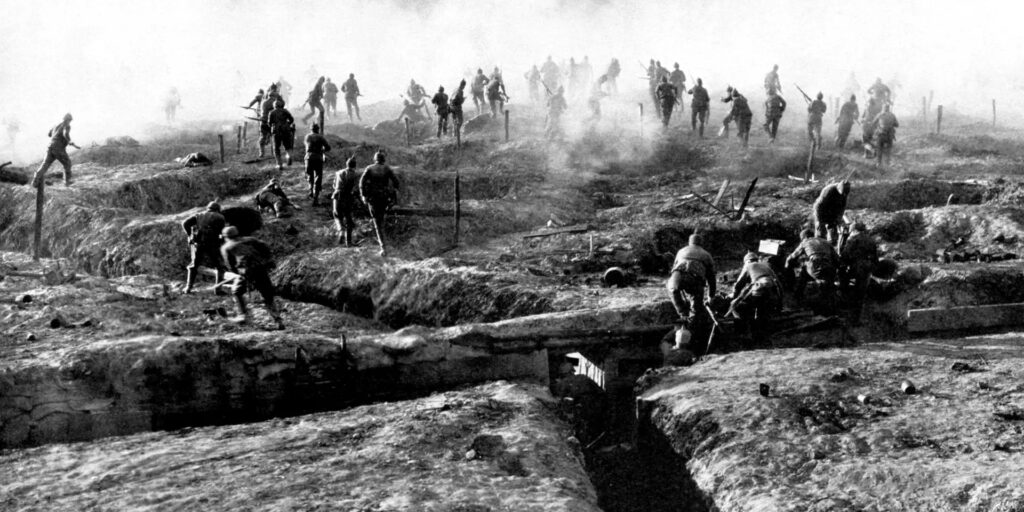Table of Contents
ToggleTop 20 Unknown and Interesting Facts About World War I
The Great War, commonly referred to as World War I, broke out in 1914 and lasted until 1918. Many of the world’s superpowers were involved in the fight, notably the Central Powers (Germany, Austria-Hungary, and the Ottoman Empire) and the Allied Powers (France, the United Kingdom, Russia, and eventually the United States).
The war began in 1914 when Austria’s Archduke Franz Ferdinand was assassinated in June, setting off a chain of events. Massive losses were caused by trench warfare, tanks, machine guns, and chemical weapons, among other technological advances. The conflict significantly changed the geopolitical landscape, affecting Europe, Africa, and portions of Asia.

In this blog, we’ll explore 20 unknown and interesting facts about World War I, shedding light on some of the war’s more obscure details. These facts will enhance your understanding of the complex and brutal nature of this global conflict.
1. The War Didn’t Start as “World War I”
The war was not known as World War I until after World War II, despite the fact that we now refer to it as such. It was initially dubbed “The Great War” or “The War to End All Wars,” signifying the conviction that a worldwide tragedy of that magnitude would never happen again. Only when a second world war broke out in 1939 did the name “World War I” gain widespread use.
2. Chemical Weapons Were Used in It for the First Time
Chemical warfare was introduced during World War I. Chlorine gas was first widely used by the Germans in 1915, during the Second Battle of Ypres. The extensive application of mustard gas, which resulted in blindness, blistering, and serious burns, came next. Chemical weapons were prohibited by the Geneva Protocol in 1925 due of their horrific effects.
3. Trench Warfare Resulted in Unimaginable Circumstances
One of the most recognizable features of World War I is trench warfare. The muddy, soggy tunnels where soldiers resided were frequently infested with vermin and sickness. Prolonged standing in damp environments might result in “trench foot,” which can induce gangrene and necessitate amputation. Across more than 400 miles in Western Europe, these trenches produced a cruel and unchanging type of warfare in which both sides found it difficult to advance.
4. The 1914 Christmas Truce
The 1914 Christmas Truce was one of the most touching moments of the war. Soldiers from both sides dropped their weapons and crossed into “no man’s land” on Christmas Eve and Day to exchange gifts, sing carols, and even play football (soccer). This unofficial truce was a fleeting act of humanity in the midst of war’s atrocities.
5. The Role of the Ottoman Empire Is Frequently Ignored
Despite the Western Front receiving much of the attention during World War I, the Ottoman Empire was also heavily involved in the fighting. The British famously worked with Arab forces during the Arab Revolt, and the Ottoman armies fought on multiple fronts, including the Middle East theater. Significant post-war repercussions from the empire’s involvement included the Ottoman Empire’s disintegration and the emergence of new Middle Eastern states.
6. Airplanes Were First Used in Combat
The first time airplanes were employed in warfare was during World War I. Aircraft were first employed for reconnaissance flights, but they soon acquired machine guns and bombs installed on them. During the war, renowned pilots like Manfred von Richthofen, a.k.a. the Red Baron, of Germany, rose to legendary status. Airpower had become an essential component of military strategy by the end of the war.
7. The Battle of Jutland, the Largest Naval Battle
The largest naval engagement of World War I took place in 1916 during the Battle of Jutland, between the German Imperial Navy and the Royal Navy of Britain. Both sides claimed victory, therefore it was militarily indecisive, but strategically it was a British victory because the German fleet stayed mostly idle for the remainder of the war. The conflict illustrated the early 20th-century naval forces’ enormous might and potential.
8. Pigeons Had an Essential Role in Communication
Pigeons were essential to communication during World War I, even with all the advancements in technology. Homing pigeons were employed to transmit vital communications between front-line troops and command headquarters since telegraph cables were frequently destroyed in battle. Despite suffering serious injuries, one pigeon, Cher Ami, is renowned for saving around 200 American soldiers by delivering an important message.
9. The “Lost Generation”
The vast majority of young men who lost their lives in World War I, suffered injuries, or suffered psychological damage are referred to as the “Lost Generation.” The loss of young men destroyed entire towns, particularly in Europe where the conflict claimed a disproportionately high toll. Almost 10% of France’s male population, or 1.4 million troops, lost their lives in combat in France alone.
10. Women’s Roles Have Significantly Expanded
Due to the war, women were able to take on a wide range of previously male-dominated jobs, including factory work, farming, and even support and nursing duties in the armed services. The cause of women’s rights was greatly advanced by this change in gender roles, and many historians think that the war was a major factor in women being granted the right to vote in a number of nations, including the United States and Britain.

11. The Campaign in Gallipoli Was a Failure
The goal of the Allied Powers’ 1915 Gallipoli Campaign was to undermine the Ottoman Empire and establish a maritime path to Russia. But the effort was a complete failure, costing the Allies almost 250,000 casualties. Gallipoli’s failure had profound political ramifications, including Winston Churchill’s resignation as First Lord of the Admiralty. It also continues to be a fundamental component of national identity in Turkey, Australia, and New Zealand.
12. The Spanish Flu Was Spread by the War
1918 saw the global spread of a catastrophic influenza pandemic as World War I came to an end. Known as the Spanish Flu, the virus killed some 50 million people and infected an estimated one-third of the world’s population. The war’s already high death toll was made worse by the mobility of soldiers and refugees, which aided in the disease’s quick spread across continents.
13. Tanks Were Used for the First Time
In 1916, during the Battle of the Somme, the British employed tanks for the first time in World War I. Although these early tanks were unstable, slow, and prone to malfunctioning, they had a significant influence on trench warfare. Tanks were widely used in subsequent conflicts because, by the end of the war, they had established themselves as an essential component of military strategy.
14. United States Joined the War Late
Despite the fact that World War I started in 1914, the US did not enter the fight until April 1917. The Zimmermann Telegram, in which Germany suggested forming a military alliance with Mexico, and Germany’s unrestricted submarine warfare, which targeted American ships, were two of the elements that influenced the U.S. decision. The United States’ admission into the conflict was a key role in shifting the tide of battle in the Allies’ favor.
15. The War Led to the Collapse of Four Empires
World War I had a profound impact on world geopolitics. The conflict led to the fall of four significant empires: the German, Ottoman, Russian, and Austro-Hungarian. New countries arose in their stead, mostly in the Middle East and Eastern Europe, changing the topography and paving the way for upcoming wars.
16. The Threat of Submarine Warfare Was New and Terrifying
Naval warfare was changed when German submarines, or U-boats, were deployed. Both military and civilian vessels were destroyed by these cunning ships that could sink ships at any time. One of the most contentious events of the war, the German U-boat sinking of the British ocean liner RMS Lusitania in 1915 claimed the lives of 1,198 passengers and significantly shifted public opinion in favor of the Allies.
17. The Fourteen Points of Woodrow Wilson
President Woodrow Wilson of the United States gave his renowned “Fourteen Points” speech in January 1918, outlining his goals for peace after the war. These included the League of Nations’ founding, an early effort at international diplomacy, as well as ideas for free commerce and self-determination. Wilson’s ideas influenced the post-war negotiations and had a long-lasting effect on international relations, even though many of them were not completely realized.
18. The Treaty of Versailles Was Controversial
In 1919, the Treaty of Versailles was signed, thereby bringing an end to World War I, but it also planted the seeds for more conflicts. Germany was subjected to severe conditions that resulted to economic suffering, discontent, and large territory losses, as well as military limitations and expensive reparations. Numerous historians contend that the harsh provisions of the pact aided in the ascent of Adolf Hitler and the start of World War II.
19. World War I Had a Profound Impact on Art and Literature
The war left a deep mark on culture, prompting a new generation of poets, artists, and authors to consider the atrocities of the conflict. Wilfred Owen and Siegfried Sassoon were two of the war poets who produced potent poems that effectively captured the savagery of trench combat. Modernist trends in literature and art were also sparked by the trauma and disillusionment of the war, and writers and artists such as T.S. Eliot and Pablo Picasso successfully conveyed the sense of disarray and loss that characterized post-war society.
20. Armistice Day and Remembrance
With the signing of the armistice on November 11, 1918, the war came to an official end. In remembrance of those who served and lost their lives in the war, several nations celebrate this day, which is today known as Veterans Day in the United States and Remembrance Day in the United Kingdom. The poem “In Flanders Fields” popularized the red poppies, which have since come to represent the millions of troops who died fighting in the Great War.

